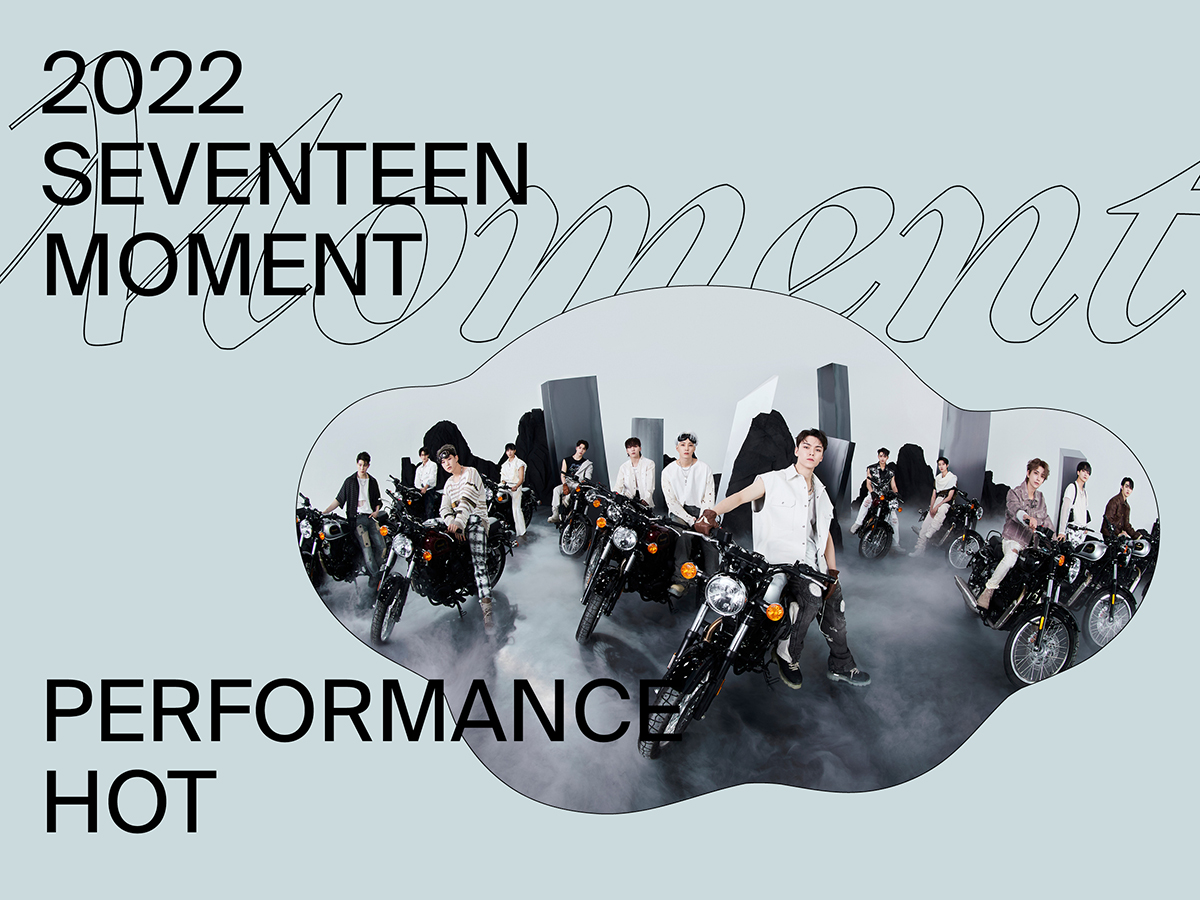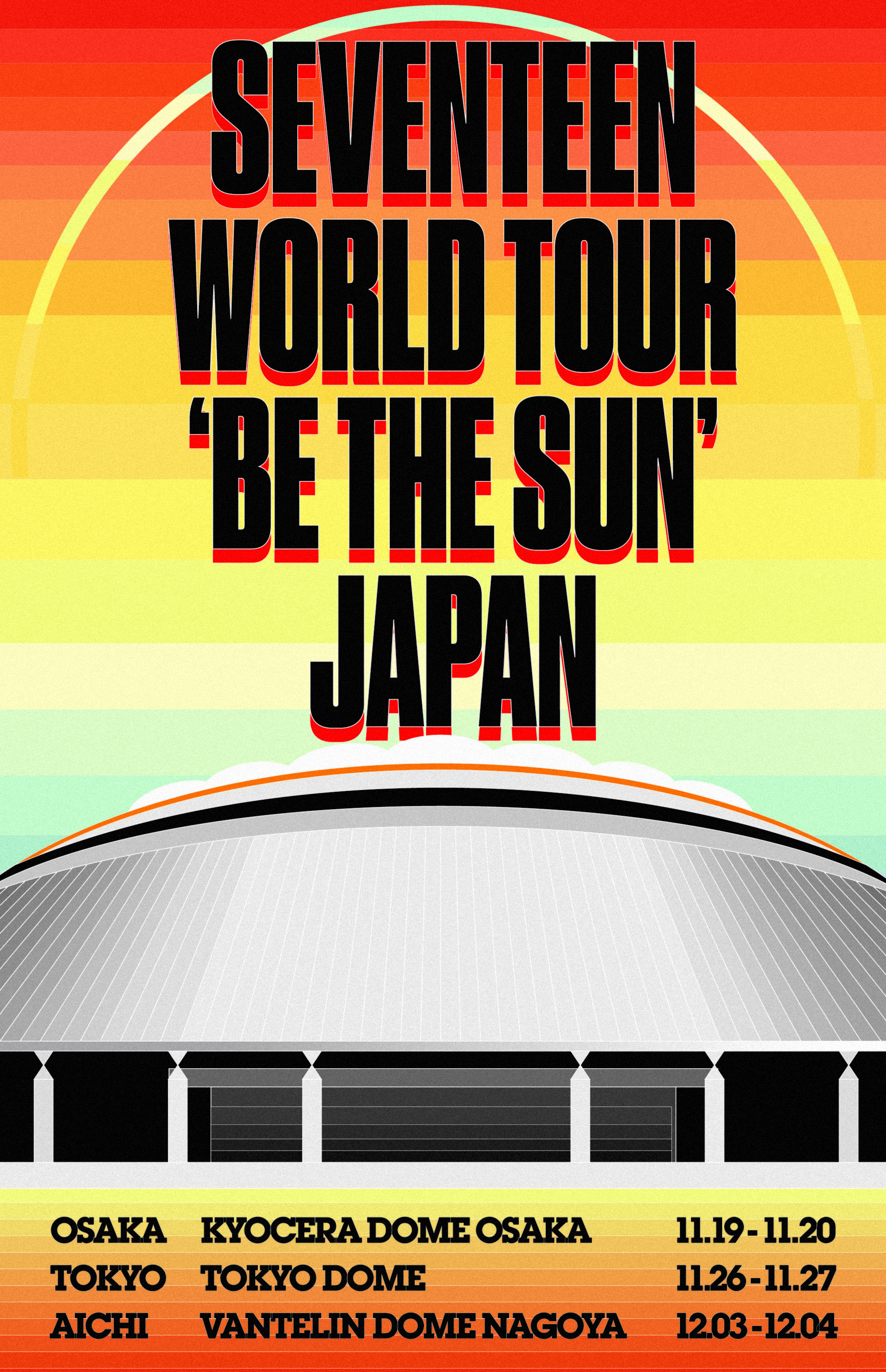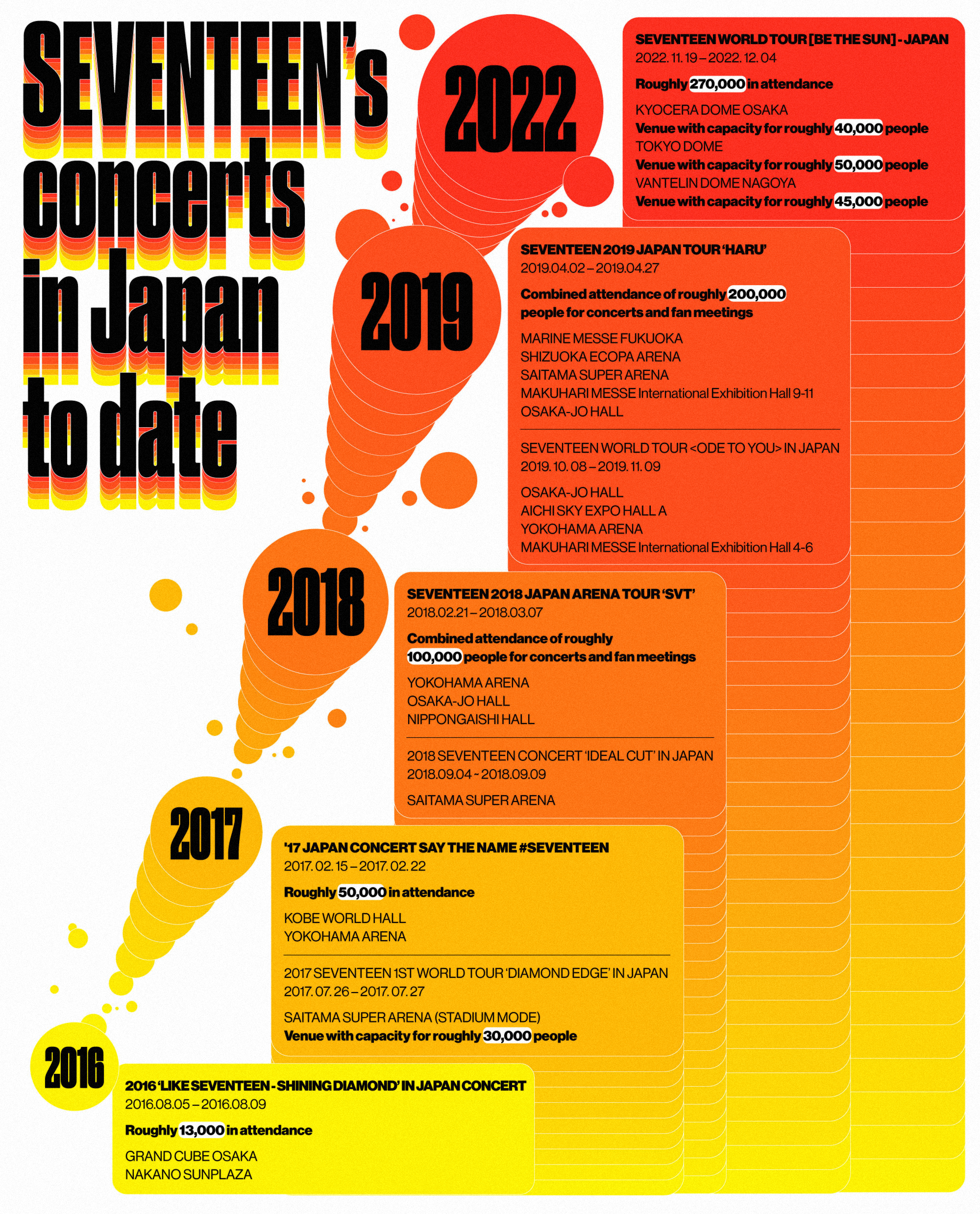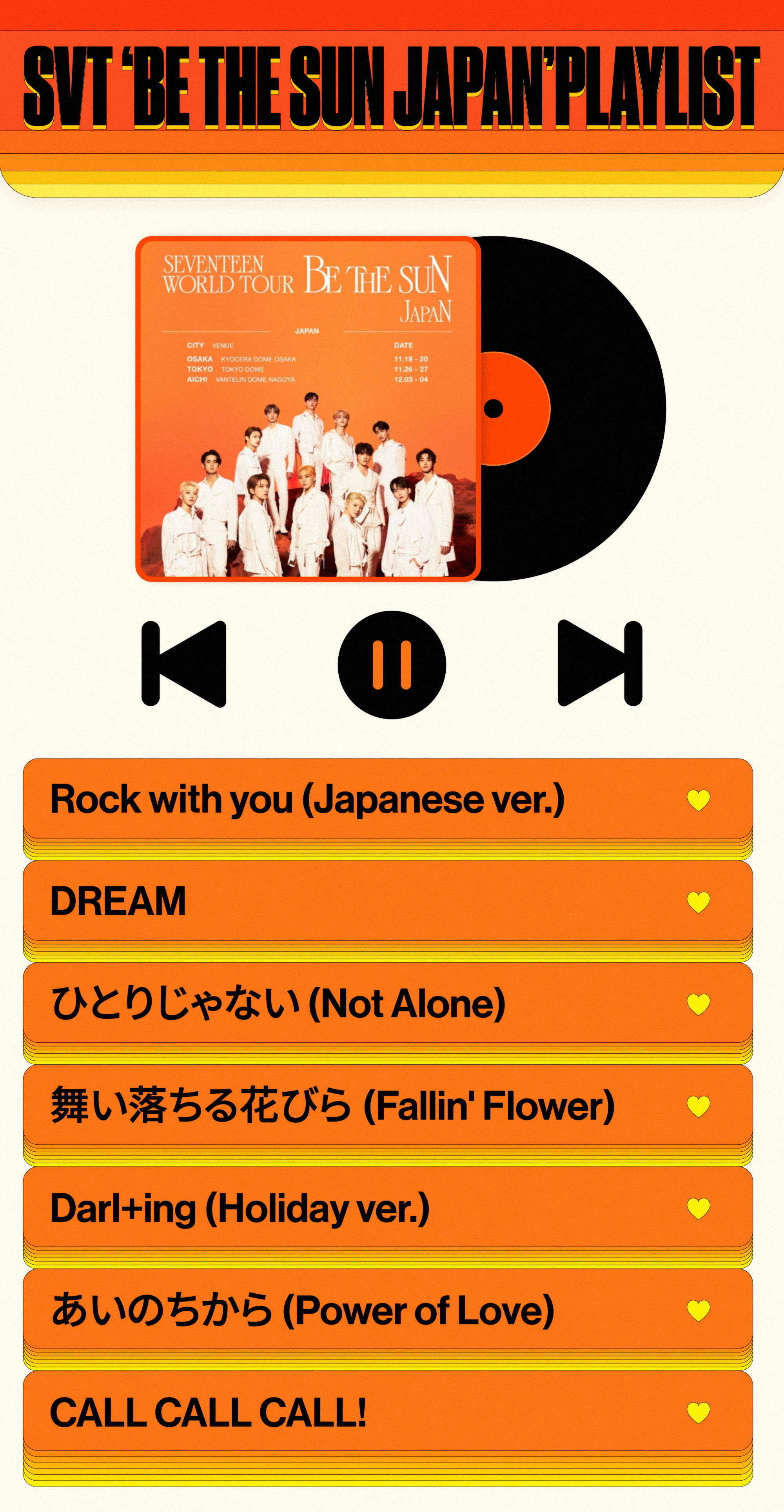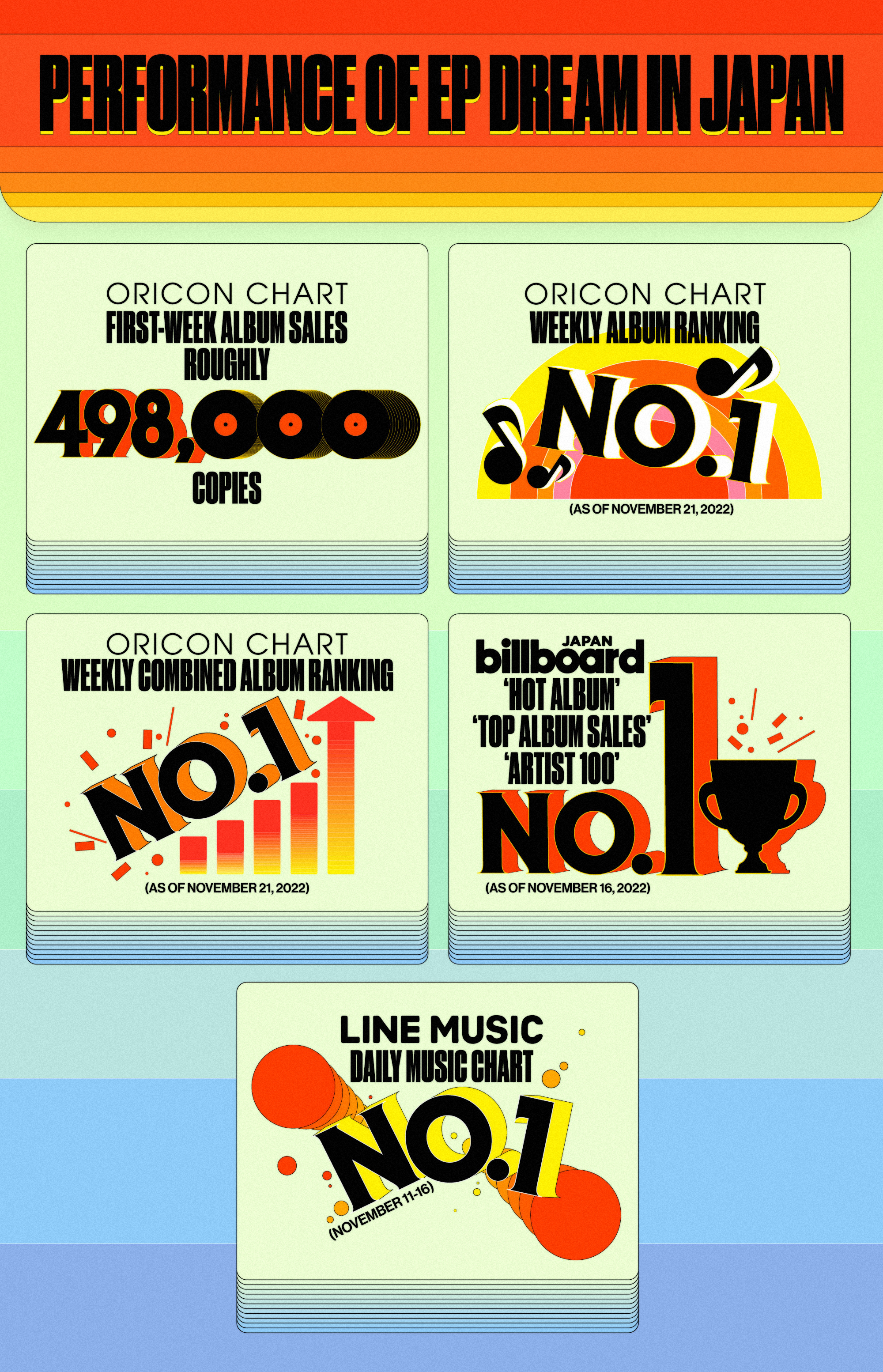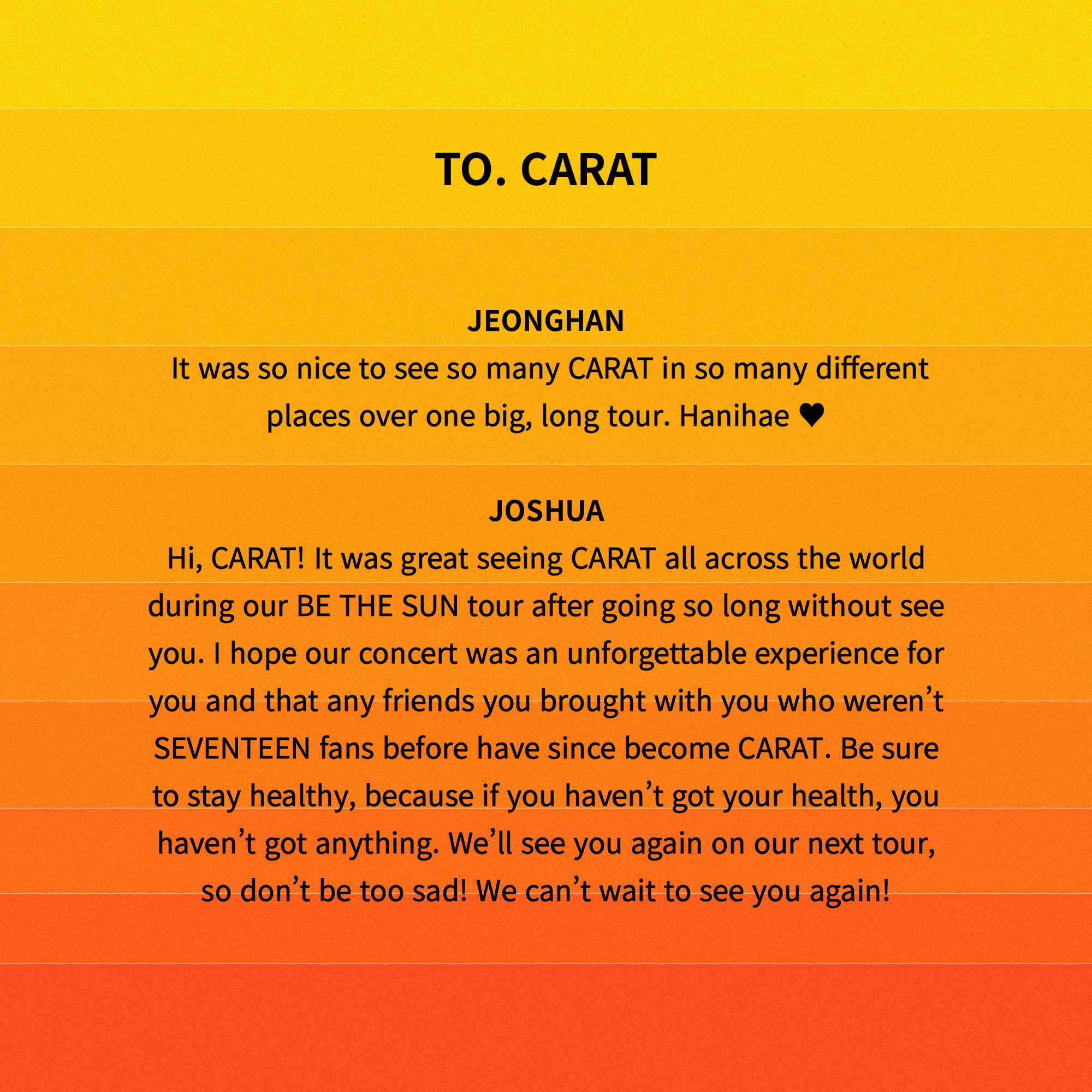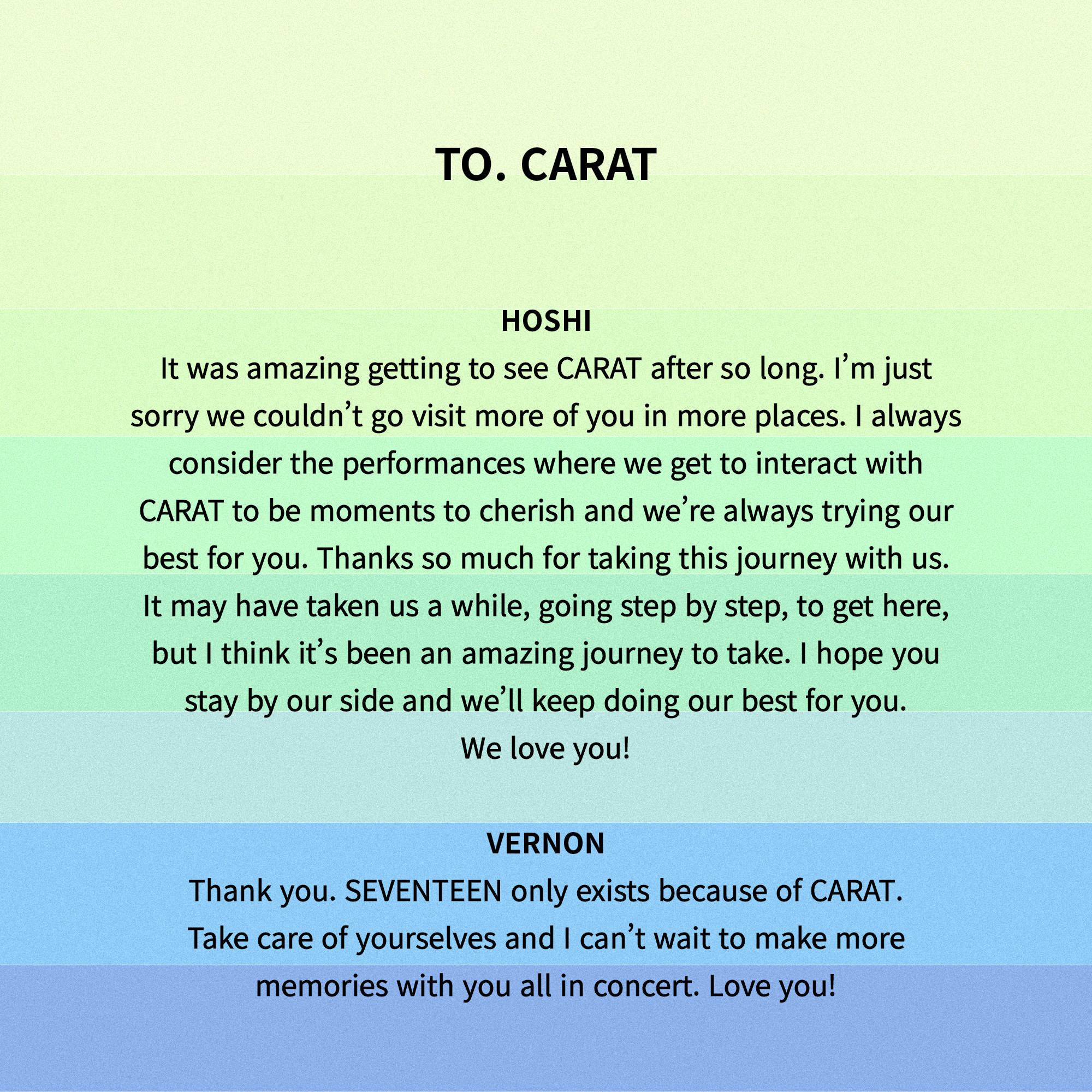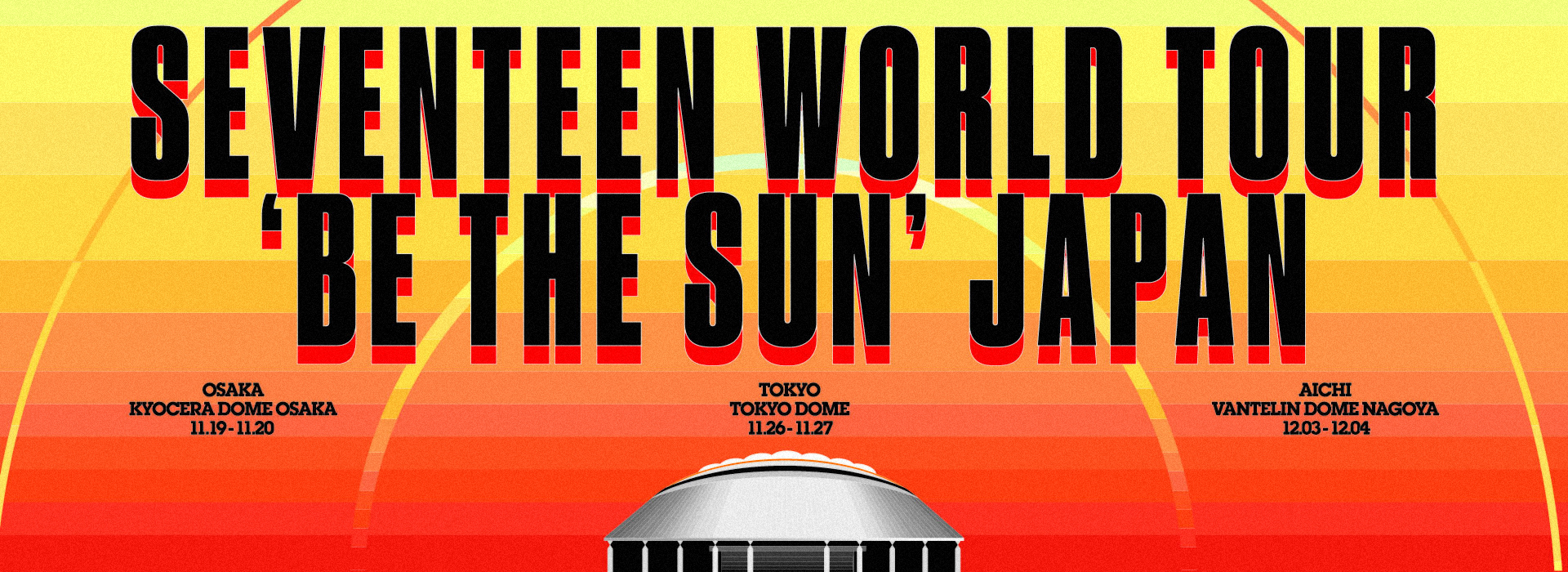
FEATURE
SEVENTEEN lights up the place of a new promise
A review of the group’s BE THE SUN concert at Tokyo Dome
2023.01.02
Credit
Article. Yoon Haein
Design. Paperpress(paperpress.kr)
Visual Director. Jeon Yurim
“Make some noise!” As SEVENTEEN continued the Japanese leg of their BE THE SUN world tour at Tokyo Dome (“Dome Tour”), HOSHI screamed into his microphone during the sound check. His voice reverberated throughout the empty concert hall as it sat waiting for an audience to pour in. “When my voice echoed through that big, empty stadium, it sounded completely different from other venues. I was so excited,” HOSHI said, thinking back on the rehearsal. “Once we were standing there in Tokyo Dome, I could see why everyone says it’s the best stage and the one they dream of being on most.”
SEVENTEEN, too, long dreamed of performing at Tokyo Dome. “After seeing so many great artists perform in dome stadiums, we ended up dreaming of having our own concert there, too,” JOSHUA said, reflecting how Tokyo Dome is seen as a marker of success for K-pop artists and a dream concert. VERNON echoed the sentiment, saying, “Ever since I was a trainee I was told that Tokyo Dome is the peak of success for an idol.” The majority of Japanese concert venues, in order of increasing size, are “live house” clubs, concert halls, arenas, and domes and stadiums. Halls typically hold around 1,000 people, arenas up to 15,000 and domes between 35,000 and 40,000. Not only is Tokyo Dome right in the middle of downtown Tokyo, it also has space for an audience of 50,000—significantly more than dome stadiums in other regions of the country—making it a dream stage not only for K-pop artists but for Japanese artists as well. SEVENTEEN’s concert at Tokyo Dome was also a unique opportunity to demonstrate the kind of clout the group holds in Japan. They performed at Tokyo Dome on November 26 and 27 plus held four other performances between November 19 and December 4 at Kyocera Dome Osaka and Vantelin Dome Nagoya. “There’s a big difference between attracting 200,000 or 300,000 people over the course of two or more days and 35,000 people all coming together in a dome concert at the same time,” Ryu Mu Yol, head of the HYBE JAPAN 360 business team. The total number of attendees depends entirely on whether putting on a one-off performance or several that span multiple days and whether they play Tokyo Dome and other stadiums around Japan. “A concert at Nagoya Dome is only feasible when there’s enough of a core fandom that they’ll not only get people from that area to come but attract people from other areas as well,” HYBE LABELS JAPAN president Lee Myung Hak said, singling out SEVENTEEN specifically. “It’s a measure of popularity.”
That “measure of popularity” was on clear display all around Tokyo Dome over the concert weekend. Hours before the concert, there was a massive crowd of CARAT outside the stadium taking pictures with handmade signs and the CARAT light stick. Most of the accommodations in the stadium area were filled with SEVENTEEN fans, including one hotel where the fans had written “SVT” in large letters in the windows. In the subway, announcements were made directly to CARAT. The landmark TOKYO SKYTREE observation tower was lit up in colors symbolizing SEVENTEEN and their world tour each weekend throughout its duration as a part of the SEVENTEEN BE THE SUN THE CITY event—a popular destination for CARAT to take photos with their light sticks before and after the concerts.
THE CITY allowed fans to experience SEVENTEEN throughout the cities they’re touring—Osaka, Tokyo and Nagoya—by visiting famous landmarks, collecting stamps by attending events held in collaboration with hotels and more. One such collaboration involved the HEP FIVE Ferris wheel: “The number of riders exploded on the day of the concert, with hundreds of people lining up, and HEP FIVE talked about the power of SEVENTEEN’s name recognition,” Kim Jungil, head of HYBE JAPAN’s business planning team, said, adding that THE CITY was “a great opportunity to solidify SEVENTEEN’s status in Japan.” HYBE JAPAN CEO Han Hyunrock elaborated on the core idea behind THE CITY, explaining that “covering the symbols of a city with an artist lets the fans who love them feel proud of how much they’ve grown,” noting that it also “increases their exposure to the artist even after they’ve left the concert.” Kim carefully laid out a typical fan’s journey of “going from Osaka to Tokyo on a unique Shinkansen ticket, staying at a SEVENTEEN hotel, having coffee at a SEVENTEEN café, taking their pictures at an exhibit, then checking out the night view from the SKYTREE.“ This kind of detailed plan shows that it doesn’t have to stop with a three- or four-hour concert or even a day—rather, you can fill up multiple days with SEVENTEEN and immerse yourself in the concert experience further. Honoka, a fan who travelled from Gunma Prefecture to Tokyo for the show, had a positive perspective on THE CITY from CARAT’s viewpoint: “I love how it’s like all of Japan’s welcoming SEVENTEEN.”
“I dreamed of this giant venue for a long time,” JEONGHAN said, “and we couldn’t see this many CARAT for so long. It’s so special and I feel so happy.” All the events came together to make the group’s performance at Tokyo Dome as special as it was. “I’ve be going to concerts a long time, but I think it’s probably hard to put on a concert in a space as big as that,” Misato, waiting around the stadium on the 27th, said, noting that the stadium tour “means a lot to both the members who have worked so hard and CARAT who always believed in them and supported them.” Ayano, who was with Misato, agreed that it was “so special because the members have called Tokyo Dome their dream concert for forever. It got cancelled because of the pandemic, then they renewed their contracts during that time, and now the concert is finally happening.” These emotions were on full display during the concert as the sound from fans’ clappers and the lights from their CARAT light sticks filled row after row of seats—sold out all the way to the very back—in perfect time. “Thankfully, CARAT filled every seat in the house,” JOSHUA said, “so it felt huge when they did the wave, and it really did take longer to go all the way around than at other venues.” Concertgoers in Japan were asked to refrain from cheering at the time to prevent the spread of infection, but as the music video for “DREAM” played and signalled the impending start of the Tokyo Dome show on the 26th, a smattering of cries rang out. “It was too bad we couldn’t hear as much as we might since cheering was banned,” JEONGHAN said, thinking back, “but we still found ourselves performing with even more energy whenever the audience cheered while watching us.” When the 13 members first entered, or during a string of difficult dance moves, or whenever there was a close-up, the sound of cheers and clappers filled the stadium.
“First off, they’re great singers and the way they dance and perform is captivating,” Misato explained. “There’s a lot of people in the group, but there’s nothing sloppy about the way they dance.” Momoka, who was waiting at the stadium with Honoka, chose “HIT” and “HOT” as the songs they were most looking forward to, respectively. “Their performances are overflowing with energy” and “it’s so cool to watch them because they’re perfectly in sync when they dance and they’re well balanced.” Tokyo Dome is so massive that it can be hard to make out the performers’ faces from a distance, but the amount of energy the group exudes is crystal clear in a three-hour concert full of perfectly timed jumps to matching heights, incredible live vocals and the so-called never-ending “VERY NICE.” There’s also their Japanese songs “Not Alone” and “Fallin’ Flower,” which they perform back-to-back as one, and when the members of the group each find their spot to stand like it’s second nature, there isn’t any bit of stage that feels left empty. President Lee Myung Hak even described how “there’s a saying among Japanese K-pop fans that you should see SEVENTEEN live at least once even if you’re not a fan of the group.”
Fans at the stadium also tended to point to “the noticeable difference between when they’re performing and when they’re talking” and “how fun they are when they’re talking on stage” as highlights. The comments they make on stage, as well as songs like the chemistry-filled “MANSAE,” “Left & Right” and “Snap Shoot” (replaced by a performance of “Call Call Call!” in Japan) round out the concert to make for an amazing show. “We’ve been using a different language for each region” of the world, JEONGHAN said, “and we practiced with each other a lot so it would sound natural.” The members of SEVENTEEN prepared for their concerts for each different country and region they visited in fine detail. “For each concert, we worked a part into one of our more popular songs that CARAT were sure to know,” VERNON explained, “and it was fun to hear their reaction every time,” referring to a small skit they performed where he would waltz out on stage innocuously before the song “MANSAE” and sing a fragment of it. Yi Hyo Jin, head of PLEDIS A&R, said the group’s concerts were made all the better thanks to the members’ ideas and great effort. “The members’ ideas were worked on throughout the concert. We replaced the encore of ‘Snap Shoot’ they’d done in other regions with ‘Call Call Call!’ for Japan with the idea that creating a performance around the song they debuted in Japan with would be more meaningful.”
VERNON and JEONGHAN each went on the record after wrapping up their stadium tour, saying, “I want to keep improving and putting on good performances for them,” and, “I’m determined to keep working hard so I can pay them back them for all their support.” HOSHI echoed the sentiment: “Us being on the greatest stage makes CARAT feel great, too, I think. Performing always has been and always will be our greatest pride, and we only feel more determined the more we get up on stage.” As proof of his point, SEVENTEEN was already performing in full force the day of the concert as soon as the sound check started. The rehearsal lasted an hour and for every song their vocals were up to the same standard as when they performed for real. “SEVENTEEN is never careless in anything they do, and that includes rehearsals,” Yi said. Their run-through of “Power of Love” was just as emotional, and the introductions for the dance team members in “Call Call Call!” just as exciting, as the real thing. They also perform “HOT” and “GAM3 BO1” just like it’s showtime and, as Yi pointed out, their positive energy even rubbed off on the staff. “HOSHI always yells out, ‘Make some noise,’ whenever there’s a mic check,” she said. “The staff actually arrives really early to do a tech rehearsal before the artists do theirs, and whenever he says that, the staff feel a jump in energy.”
“Finally.” Mel, from Texas, travelled to Japan with friend Doan. “It was supposed to happen in 2020, but it got cancelled, and so it was very sad,” Mel said. “And we were waiting on it, and now that it’s here and it’s happening it’s like, finally! It’s just good to see a group that you’ve stayed by for so long and you’ve supported reach their dreams.” SEVENTEEN announced in 2019 that they would be holding a stadium tour the following year, but the onset of the pandemic in early 2020 brought all concerts to a halt and it wasn’t until this summer that the group could finally put on their world tour. But the group wasn’t frozen in place waiting for three years; the 13 of them all renewed their contracts after seven success-filled years together, put out their first platinum records with Your Choice and Attacca in 2021 and then their first double-platinum album in July this year with Face the Sun. The latter charted as high as number seven on the Billboard 200 and all of the group’s Japanese albums hit number one on Oricon’s weekly Albums Chart, proving the team was as popular as ever. “I felt like the performance of ‘Cheers’ that the leaders did held a lot of meaning,” Yi commented. “One of the lines in the song says, ‘They all said we’d crash and burn,’ but then that same group ended up doing a stadium tour. The contrast was very cathartic.” After growing in steps and stages, the tour was a very symbolic achievement for SEVENTEEN, finally making it to that stage and lighting up Tokyo in their own colors.
And so, for SEVENTEEN, Tokyo Dome is now a place of one dream fulfilled as well as the place of a new promise toward another dream. “I think this made me have a new, even bigger dream,” JOSHUA said. “Now that the dream I had since debuting has come true, I’m determined to keep growing as a singer to give back to all the fans who have given all their love.” It’s with this mindset that the members of SEVENTEEN will continue to rise up in steps forever. “We worked really hard even during the pandemic to make sure we didn’t lose our knack for performing by continuing to release albums and putting on online concerts,” HOSHI said, looking back on the past three years. “We were sure we would back up on that stage again.”
Copyright © Weverse Magazine. All rights reserved.
Unauthorized reproduction and distribution prohibited.
Unauthorized reproduction and distribution prohibited.
Read More
- SVT LEADERS have swag2022.07.22
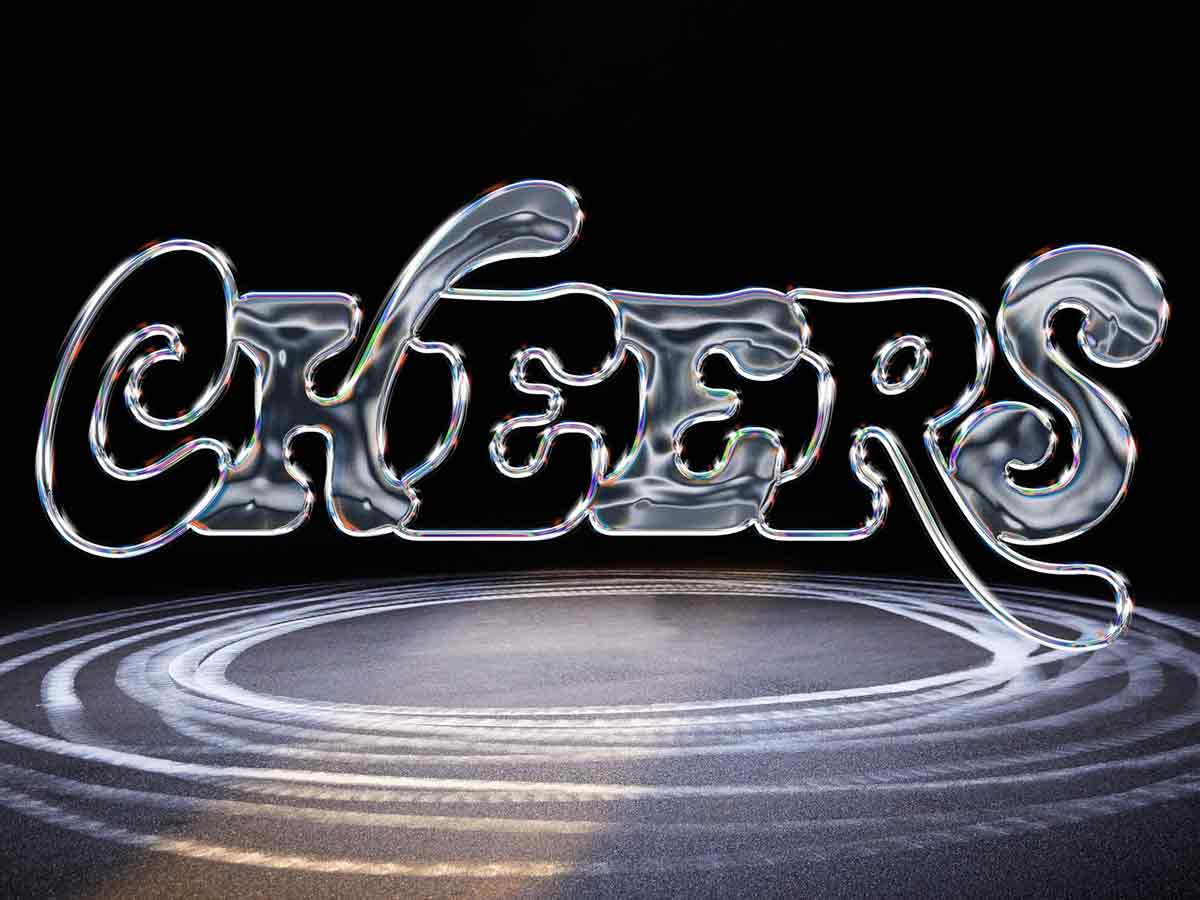
- SEVENTEEN’s BE THE SUN world tour report2022.09.01

- 2022 SEVENTEEN MOMENT: Performance2022.12.20
